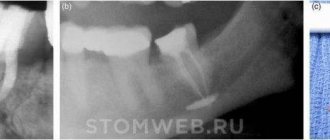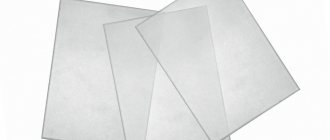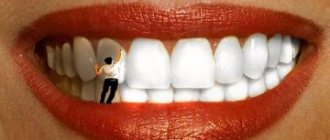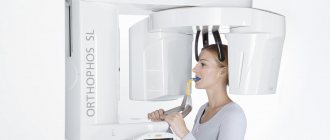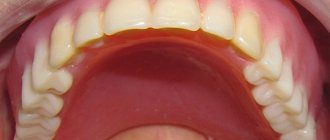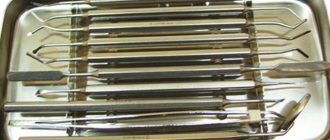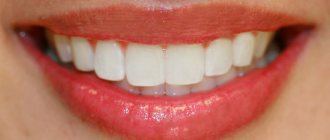The issue of high-quality composite materials used for dental restoration has always been acute. Dental composites are subject to high demands. They must have sufficient mechanical strength to be used not only on the front teeth, but also on chewing teeth.
Have good aesthetic properties, insignificant polymerization shrinkage, low coefficient of thermal expansion.
Be technologically advanced, make it possible to easily manipulate color shades. It became possible to combine all these properties in one composition relatively recently, after the development and introduction of new dental restorative materials, which include nanocomposites.
Types of composites
According to the curing method there are:
- chemically curing (paste - paste, powder - liquid);
- light-curing (photopolymers).
The consistency of the initial paste-like composite depends on the amount of filler and dispersion. There are pastes of high viscosity (packable and dense), as well as low (fluid). Most materials use fillers with average particles with a diameter of 0.2-3 microns. There are also particles with a diameter of 0.04 microns - microdisperse filler. The proportion of particles that would be even smaller ranges from a few% to 35%. Recently, varieties of composites with nanofillers with a size of 1-10 nm have appeared.
Manufacturers of nanocomposites
Among the manufacturers that produce the material, the following foreign brands can be distinguished.
ZM ESPE
ZM ESPE (USA) is one of the leaders in the development of innovative solutions in the field of dentistry. The company produces materials and instruments for orthopedics and dental therapy.
The restoration material Filtek Supreme XT belongs to true nanocomposites, that is, only nanoparticles are used as filler. The composition has high polishing and strength properties and retains a dry shine for a long time. It is used for the restoration of chewing and frontal dental units, the production of direct veneers, splinting and the formation of tooth stumps.
Dentsply
The American company DENTSPLY sells its products in 120 countries.
One of the products is the nanohybrid composition Ceram X, which uses ceramics and nanoparticles as a filler.
The main purpose is frontal restoration. Uniform transparency and high aesthetic characteristics are achieved with a minimum number of color shades.
Voco
The VOCO company (Germany) produces materials for orthopedic, restorative and preventive dentistry. VOCO products are purchased in more than 100 countries around the world.
The Grandio composite is produced using nanotechnology, allowing it to achieve a fullness by weight of 87%. Methacrylate is used as a matrix. Curing is done with halogen light. The composition is available in capsules and syringes. Grandio VOCO meets all the requirements for modern dental nanocomposites.
Vivadent
Initially a Swiss company, and now an international syndicate, Vivadent produces a wide range of restorative and therapeutic dental compounds, supplying them to 120 countries around the world.
One of the company’s products, the nanohybrid light-polymerizable composite Tetric EvoCeram, is designed for filling and restoration of anterior and chewing teeth. The ability to code by shade makes the dentist’s work easier and allows for maximum aesthetic effect.
Kerr
Founded in the USA in 1891 by the Kerr brothers, the company of the same name has today turned into an international company producing products that are in demand in many countries around the world. Including in Russia.
The Premise nanohybrid composition contains particles of 3 sizes - nanofiller 0.02 microns, glass filler 0.4 microns and polymerized particles 30-50 microns. This made it possible to ensure high filling (84%) and low shrinkage (1.6%) of the composite.
Pentron
The nanohybrid composite Simile produced by Pentron is a universal material intended for the treatment and restoration of chewing and anterior teeth.
The composite has high strength, excellent polishability and a variety of shades, allowing you to achieve absolute color harmony with natural tooth enamel.
Schiitz Dental Group
The German company Schiitz Dental Group, in addition to many other materials for dentistry, produces the restorative nanocomposite NanoPaq. Exceptional strength and reliability of the restoration is ensured by high fullness, which reaches 82%.
The NanoPaq composition has 4 transparency classes - highly transparent, low transparent, medium transparent and completely matte. The nanocomposite manufacturing technology allows you to control the level of transparency with the possibility of obtaining any intermediate option.
Microhybrid and microfilled composites
Smooth and shiny microhybrid composites contain a mixture of fine and microdispersed particles (84% filler by weight). By volume, the filler concentration reaches 70%, since there are microdispersed particles in the spaces between the fine particles.
A distinctive feature of microfilled composites is the large surface area of the microdisperse filler. For the paste to acquire sufficient viscosity, 30-50% of their volume is enough. The composition may contain microparticle-reinforced polymer particles with a size of 10-20 microns, mixed with a polymer matrix. The fine filler in such composites is quartz, lithium aluminum silicate, porcelain flour or glass - barium, zinc, ytterbium, which often have non-radiographic properties. Microdisperse – colloidal silica particles.
The manufacturer indicates the degree of radiopacity in the characteristics of the composite. If the material is permeable to x-rays, it is advisable to use it on the lateral teeth. Finely dispersed varieties are matte in appearance and not transparent enough, while microdispersed varieties have optical properties close to enamel.
| Characteristic | Microhybrid composite | Microfilled | Compomer | Hybrid ionomer | Glass ionomer |
| Compressive strength | High | Above average | Above average | Average | Below average |
| Flexural strength | High | Above average | Above average | Average | Below average |
| Flexural modulus | High | Above average | Above average | Average | Above average |
| Wear resistance | High | Above average | Above average | Average | Low |
| Fluoride release | Low | Low | Below the average | Above average | High |
| Ability to absorb and restore fluoride concentration | Low | Low | Below average | Above average | High |
| Aesthetics | Excellent | Excellent | Excellent | good | Bad |
General overview
A composition based on a nanocomposite mixture is a mixed structure consisting of dissimilar elements. Within the framework of dentistry, this term defines materials that are different in nature of origin and method of formation, the percentage of filler content in which is at least one third of the declared volume. The basic elements for such combinations are barium glass, quartz, zirconium and titanium silicates, metal oxides, polymer crystals, and heavy salts.
The versatility of nanocomposites, which are elements whose volume is equal to a nanometer, is manifested in the range of their applications. In dental practice, such materials are used:
- As a raw material for the manufacture of fillings covering carious cavities;
- To eliminate areas of erosion on the enamel coating;
- When correcting wedge-shaped defects;
- As a material for temporary fillings that can be built up in case of chips;
- As an insulating or sealing agent.
The production processes implemented to create such mixtures allow the modernization of hybrid structures through point modification, as well as the reproduction of true nanocomposite elements based on their own structural carriers.
Composite base
The composite is based on common polymer oligomers – dimethacrylate or urethane dimethacrylate. These are viscous liquids containing monomers with low molecular weight, which regulate the degree of paste-likeness of the substance. Oligomers and monomers are characterized by double carbon bonds, so they undergo a polymerization reaction and transform the composite into a polymer.
The curing base is a system that promotes polymerization under the influence of high intensity visible blue light. Polymerization requires 20-40 s. In chemically cured composites, an organic peroxide acts as an initiator, and an organic amine acts as an activator. They are mixed right before applying the composite.
Dental composite materials (composites)
Dental composites today are the main class of restorative (filling) material. The advantages of composites over many other filling materials are their high strength, which allows them to be used in any clinical situations (both on anterior and chewing teeth); high and flexible aesthetic characteristics that allow you to manipulate the color of restorations and their gloss over a wide range of values; high technology when performing restorations; minimal polymerization shrinkage.
However, composites, even with the maximum content of inorganic filler, still have some shrinkage during curing, a fairly high coefficient of thermal expansion and less rigidity than that of dental tissues. These disadvantages of composites contribute to the appearance of marginal gaps between the filling and the dental surface, leakage of oral fluids through these gaps and, as a result, depressurization of the cavity. This leads either to the loss of the filling (damage to the restoration) or to the development of secondary caries. The disadvantages of composites are eliminated by the use of adhesives (adhesive systems ensure “gluing” of the composite to dental tissue) or other techniques. Therefore, polymerization shrinkage of dental composites is currently not a problem in restorative dentistry.
By definition, a composite material is a mixture of several dissimilar components. In the case of dental composites, it is a mixture of filler (usually inorganic) and an organic matrix, and the filler content is very significant (at least 30% by volume; with a lower filler content, the material is usually classified as a “low-filled polymer”).
Additional components of the organic matrix (in the initial state) are a polymer inhibitor (to increase the curing time and shelf life of the material), a catalyst (in the case of chemically cured composites; a separate component in the form of a paste or liquid), a photoinitiator (in the case of light-cured composites), an accelerator polymerization (in chemically cured composites), ultraviolet light absorber (to improve light stability) and dyes.
Typical fillers for dental composites are amorphous silica, quartz, barium glass, strontium glass, zirconium silicate, titanium silicate, oxides and salts of other heavy metals, and polymer particles. Modern technologies for the production and introduction of fillers include: improved grinding technologies to produce smaller particles; technologies for producing chemically deposited filler particles (the so-called sol-gel process; allows you to obtain filler hybrids); strengthening of composites with fibers (reinforcement; but this leads to a decrease in the transparency of the composite); introduction of porous (chemically deposited) fillers and three-dimensional structures (to reduce shrinkage stress); introduction of fillers with anti-caries properties (primarily those that release fluoride; however, the limitation is the low permeability of the organic matrix of the composite); technologies for modifying the surface of filler particles to allow copolymerization with an organic matrix (for example, alkoxysilanes); nanotechnology.
The size and amount of filler are the basis of the most common classification of dental composites. Based on the size of filler particles, composites are distinguished: macrofilled, macrophiles (10-100 microns); midin-filled (1-10 microns); mini-filled (0.1-1 microns) micro-filled, microphiles (0.01-0.1 microns); hybrid (contain macro- and microparticles); heterogeneous (conventional or hybrid composites with additives of particles of polymer material 1-20 microns in size).
Based on the content of filler particles (the degree of filling of the dental composite), highly filled composites (more than 60% by volume), medium-filled composites (40-60% by volume) and lightly filled composites (30-40% by volume) are distinguished. The polishability, abrasion resistance and color stability of the dental composite depend on the size of the filler particles. Strength, degree of thermal expansion and polymerization shrinkage depend on the degree of filling.
Recently, so-called nanocomposites have been identified among dental composites, which can be conditionally considered as hybrid microphilic (microhybrid) materials. In nanocomposites, “nanosized” particles (nanomers), which have a size of up to 0.1 μm (100 nm), are used as fillers. Nanomers tend to aggregate to form nanoclusters, so in reality a nanocomposite contains a mixture of nanomers and nanoclusters as a filler. Nanoclusters behave like individual particles, and modern technologies make it possible to control their size and shape. As a result of combining nanometers and nanoclusters in one material, the material has a high fullness (more than 75%), which ensures high strength. In conventional hybrid dental composites, during the process of abrasion, strong filler particles leave the surface and leave behind “craters,” which reduces the shine of the restoration or filling. In the case of abrasion of nanocomposites, nanoclusters are removed not entirely, but their smaller components, which allows the nanocomposite to have a more durable shine and good polishability. Nanocomposites of the latest generations (for example, Estet-X) contain three filler phases: nanoparticles, midiparticles phase and miniparticles phase. The ratio of the three phases is strictly dosed. The name “micromatrix” has been proposed for such nanocomposites.
The basis of the organic matrix of dental composites (before the stage of their curing) are monomers, the molecules of which contain fragments of epoxy resin and two methacrylate groups. It is known that methacrylic acid and its derivatives easily enter into polymerization reactions (for example, with the formation of polymethyl methacrylate, which is usually called “plexiglass”), and the reaction proceeds by a free radical mechanism. The first monomer of this type was patented back in 1959 (GMA monomer) and since then GMA and its derivatives have been included in almost all modern dental composites and adhesives. The reason for the dominance of monomers of this type is the relatively low polymerization shrinkage (about 6% in pure form), rapid curing, low volatility, and good mechanical characteristics of the final polymer.
Polymerization initiators are substances that generate free radicals when exposed to light or chemically. Therefore, according to the polymerization (curing) method, dental composites are divided into light-curing composites (light-composites, photo-composites, gel-composites) and chemical-curing composites (self-curing).
Chemically cured dental composites are either paste-paste or powder-liquid systems. The reaction that initiates polymerization (curing) is the interaction (after mixing the starting components) of the amine and benzoyl peroxide with the formation of free radicals. The rate of polymerization depends on the number of initiators, temperature and the presence of inhibitors. The main advantage of such dental composites is uniform curing, regardless of cavity depth and filling size.
Light-curing dental composites are a one-component initial form (paste or flowable material). A light-absorbing substance (photoinitiator; the most traditional is camphoroquinine, maximum absorption spectrum is 475 nm), which, when absorbing light with a wavelength of 400-500 nm (blue light), forms free radicals, is used as an initiator of polymerization (curing). Light composites do not require mixing (therefore they are more homogeneous), they allow modeling of the restoration (filling) before light curing, and the absence of chemically active additives (the absence of amines) gives them color stability and aesthetics. However, it should be taken into account that the degree and depth of polymerization may be non-uniform and depends, first of all, on the transparency and color of the composite, and the power of the light source. Typically, layer-by-layer application and curing of the dental composite is carried out, which makes it possible to reduce shrinkage and stress in the matrix and more accurately select the color of the restoration (filling).
The light source for curing dental composites is usually conventional halogen lamps (halogen photopolymerizers). Their disadvantages are the small “useful” component of radiation (less than 2%), the need to use an interference filter that cuts off stray thermal radiation, and a fan (to remove heat). Recently, emitting LEDs are increasingly used as light sources, the emission spectrum of which practically coincides with the absorption spectrum of camphoroquinone, and which do not have all the disadvantages of halogen lamps.
A separate group of dental composites with which teeth are filled are restoration (filling) materials of a “hybrid” type – compomers.
Compomers are light-curing restoration (filling) materials that combine the main advantages of composites (ease of use, strength, aesthetic properties) and glass ionomer cements (chemical adhesion to tooth tissue, good biocompatibility, fluoride release). The term “compomer” comes from a combination of the words COMPOSITE and glass ionomer. The initial (before polymerization) organic matrix of compomers is a monomer (acid methacrylate), the molecule of which contains methacrylate (like a composite) and acid (like glass ionomer cement) groups. Compomer fillers are fluoroalumosilicate glass particles. Acid methacrylates can simultaneously cure by the free radical mechanism (as in the case of polymerization of light-curing composites) and by the ion exchange mechanism (as in the case of glass ionomer cements). Curing of compomers occurs only due to light-induced polymerization. Curing similar to glass ionomer cements (requiring the presence of water to dissociate acid groups) occurs only in areas of the material in contact with water.
Compomers differ from classical hybrid glass ionomer cements modified (reinforced) with composites. In the latter, the ion exchange reaction, which initiates the curing of the material, is the dominant part of the entire curing process. In contrast, compomers are materials that contain the main components of glass ionomer cements in quantities insufficient to maintain the ion exchange reaction under normal (anhydrous) conditions. Although compomers were developed to combine the best properties of resin composites and glass ionomer cements, their behavior is more similar to that of dental composites.
Disregarding the basic physical and chemical characteristics of materials, the entire range of modern dental composites, according to the features of their application, can be divided into 5 main groups.
- Universal composites with one-color color restoration concept. This group includes almost all chemically cured composites and some light-cured composites.
Charisma PPF. Chemically cured composite material. Used for filling, restoration of the crown part of the tooth, fixation of mobile teeth.
Ceram X. Light-curing nanocomposite for small restorations (fillings) of chewing teeth. The material has been optimized for highly aesthetic restorations with a minimum number of shades.
- Versatile composites with a two-layer color reproduction concept. Such composites (restorative systems) include one or more dentins, which provide the creation of the internal structure of the tooth, and a set of enamel shades (including a transparent cutting edge), which ensures the refraction of light on the tooth surface. These materials make it possible to achieve fairly high results in the restoration of anterior and chewing teeth, but still somewhat limit the creative possibilities of the dentist in reproducing color.
Filtek Z 250 (Filtek Z 250). Aesthetic light-curing microhybrid composite. Contains an increased amount of smaller particles. It is used for filling cavities of all types in the frontal and chewing teeth, making veneers, restoring the coronal part of the tooth, and splinting. Has 15 different shades.
Spectrum TPH. Light-curing microhybrid composite. The filler (barium glass and sintered silicon) has 2 fractions of 0.04-0.4 microns and 0.8-1 microns with a filling of 55-60% by volume. Due to the successful combination of aesthetic and mechanical properties, they are used for restoration (filling) of all types of defects in hard dental tissues. An entire generation of dentists grew up on this material and mastered the basics of cosmetic restoration techniques.
- Restoration materials with a three-layer color reproduction concept. Restoration (filling) materials of this group are “artistic” systems. The range of shades includes a wide range of opane (opaque) dentin shades, basic tooth body shades and a set of transparent enamels.
Estet-X. Light-curing micromatrix composite material. The filler is presented in the form of three phases (up to 2.5 microns, 0.4-0.8 microns and nanoparticles 0.01-0.02 microns), the ratio of which is strictly dosed. Has extremely high aesthetic capabilities. Used by dentists who focus primarily on achieving high aesthetic results. With the same strength and color stability as, for example, Spectrum TRN, it is washed 3 times less, does not require updating the gloss and has 2 times less shrinkage (which justifies the high cost of this material).
Filtek Supreme. Light-curing nanocomposite material. The filler (zirconium silicate) is presented in the form of nanoparticles (0.02-0.75 microns in size) and nanoclusters. The technology allows you to control the size of nanoclusters (create a given size) and in this way influence the strength, polishability and polymerization shrinkage of the material. A universal restoration (filling) material that combines the mechanical properties of microhybrids and the aesthetics of microfills.
The choice of a dentist in favor of a specific material from these three groups is associated with a combination of several factors (price of the material, cost of work, time spent working with the patient and the qualifications of the doctor, the final aesthetic result). For relatively simple restoration (filling), dental composites of the 1st and 2nd groups are predominantly used. If the dentist is not very limited in time, and his patient is less limited in funds, he can use materials of the 3rd group, which provide him with wider opportunities.
- Dental composite materials for restoration (filling) of chewing teeth. The main requirements are high resistance to abrasion and deformation under chewing load.
Quixfil. A light-curing composite material designed specifically for restoration (filling) of chewing teeth. It has a high (30% greater than most other composites) fullness, due to which it has increased hardness and low polymerization shrinkage. The filler (glass) is presented in the form of two fractions: 1 and 10 microns. A specially developed organic matrix (monomer) provides a large depth of polymerization (the thickness of the polymerized layer is up to 2.5 mm). The high level of transparency of the material makes the restorations (fillings) slightly different from natural enamel, which makes it easy to determine the location of the material in complex restorations of lateral teeth. Has one universal shade.
- Liquid-flowing composite materials. Used for filling small cavities, fissures, and cervical defects using the minimal intervention technique. For small cavities, shrinkage and subsequent marginal permeability are not as important as for large cavities, so flowable materials are optimal for adapting the restorative material to the cavity. All fluid-flowing composites are classified as medium- and lightly filled (filler content less than 47%). Liquid-flowing composites have the property of thixotropy (fluid under the influence of instrument load and viscous after the load is removed), therefore, before polymerization, they do not flow beyond the boundaries of the cavity, even on the teeth of the upper jaw. Another important property of flowable composites is their low modulus of elasticity. This allows them to compensate for the stress that occurs under the influence of chewing load at the “filling-tooth” border (which is especially important when restoring cervical defects).
X-flow. A universal, flowable, light-curing composite. Adapts to cavity walls without the use of hand tools. The filler (38% by volume, particles 1.6 microns in size) is represented by special glass, highly dispersed silicon dioxide, titanium dioxide. Used for filling small cavities of anterior and lateral teeth (without chewing load), sealing fissures, and restoring shallow cervical defects. Can be used for fixation of orthopedic structures (for example, indirect veneers), provided there is light access to the tooth/restoration interface. Has a number of shades.
Filtek Flow. Liquid-flowing light-curing composite. Filler content is 47% by volume, particle diameter is 1.4-1.6 microns. It has high wear resistance and is compatible with other composites. Has a number of shades.
Dyract Seal. Light-curing compomer material (sealant), developed specifically for filling (sealing) fissures. Thanks to its good fluidity and ideal wetting ability, it penetrates deeply into recesses and fissures and ensures a high-quality marginal seal. Abrasion resistant. Being a compomer, it releases active fluoride for a long time, which provides additional protection for dental tissues.
Make an appointment with the best dentists in Moscow!
Pigments
The presence of pigments in the composite makes it closer to the natural shades of teeth. They are in no way inferior in aesthetic indicators to zirconium crowns for the front teeth. Manufacturers offer about ten or more shades that cover the natural gamut - from gray to yellow. It is possible to obtain other colors that go beyond these limits by mixing intensely colored pigments. Special tones are used to fix veneers, whitened teeth and metal-free dentures.
Structure modification
Modification of hybrid class compounds in industrial conditions is a consequence of the need to create a separate filler space containing elements of different volumes. Smaller fractions fill empty spaces in the mass, providing mechanical strength, polishability, and aesthetic appeal. Large elements act as a guarantee of complete structural filling, increasing the resistance of the finished composition to loads.
Due to the uneven distribution of micro-fragments, which tend to stick together, it became necessary to use an innovative homogeneous distribution technique that supports the creation of an absolute coating and resinous impregnation of small compounds. As a result of scientific research, hybrid mixtures have emerged - modified materials that are characterized by strength and long-term preservation of aesthetic properties.
What is polymerization shrinkage
When choosing a composite, polymerization shrinkage must be taken into account. It can reduce adhesion to tooth tissues and lead to insufficient marginal seal. Thus, microhybrid composite materials are optimal for inlays in the oral cavity, since they shrink less during curing than microfilled ones.
2 ways to minimize polymerization shrinkage:
- layer-by-layer application and fractional polymerization of composites in order to reduce overall shrinkage;
- production of an inlay in the laboratory on a plaster model, followed by fixation on the tooth with a flowable composite material and ultrasound.
Properties and Features
The development of nanocomposites made it possible to break out of the vicious circle that previously existed in relation to dental compositions, when achieving high aesthetic parameters was achieved at the cost of reducing strength, and vice versa. It became possible to combine the necessary properties in one material.
Nanocomposites are distinguished by:
- high strength and reliability of restoration;
- excellent polishability, maintaining a dry shine for a long time.
- low shrinkage during polymerization - 1.6–1.9%, which is significantly lower than that of traditional composites;
- high degree of matrix filling – up to 87% by weight;
- manufacturability, good handling properties;
- a large number of color shades.
The disadvantages include the high price and insufficient knowledge of clinical manifestations.
The scope of use of nanocomposites is practically unlimited. They are used for:
- filling any carious cavities;
- restoration of enamel defects with fragmentary erosion;
- restoring the aesthetics of anterior teeth;
- installation of temporary fillings;
- direct veneer overlays;
- splinting teeth;
- restoration of metal-plastic and metal-ceramic crowns and facets;
- manufacturing of onlays and inlays;
- building up tooth stumps on anchor pins;
- as a sealant.
Light irradiation is mainly used for polymerization.
Thermal expansion and water absorption of composites
The thermal expansion of composites is higher than that of natural tooth dentin and enamel. This indicator depends on the amount of polymer. It is higher for microfilled composites than for microhybrid ones. They also differ in the degree of water absorption. Microfilled varieties are more likely to change light under the influence of water-soluble dyes.
The consequence of water absorption is an increase in volume, but it does not in any way compensate for polymerization shrinkage, but on the contrary leads to a deterioration in the properties of the polymer.
Making a substance by modification
Modification of the structure of the composite composition is required due to the fact that the natural composition has particles of different sizes. Small parts fill structures to achieve later important dental features. First of all, they allow the use of abrasive material without allowing it to damage the surface.
In addition, the material allows the use of polishing agents and equipment. And thanks to these particles, the aesthetics of the final result is high. Larger particles allow voids to be completely filled and provide reliability and strength.
Since the small and large components of the substance have an uneven structure, and they often stick together, there is a need for additions. In this regard, an innovative technology was created that helps to obtain an even connection and uniform impregnation with adhesive substances.
Thus, there was a need to create mixtures modified with nanocomposites. The resulting substance has a larger structure and has the same durability as the one originally studied. Of course, it is impossible to avoid the loss of surface gloss, but with the new composition it disappears much more slowly.
Where to find a highly qualified dentist in Ivanteevka?
At the Sanident clinic, one of the largest in Ivanteevka, specialists with extensive experience are ready to provide professional dental care and treat teeth at reasonable prices. We have a flexible system of discounts, hold promotions, and provide guarantees for all types of dental services.
You can make an appointment with a dentist at a time convenient for you. We use an individual approach and strive to make treatment comfortable for each patient. Our dentistry has an impeccable reputation and a large number of positive reviews.
Dentistry "Sanident" is located at the following addresses:
- Ivanteevka, st. Novoselki, 4;
- Shchelkovo, st. Central, no. 80.
Service life and care of the filling after its installation
On average, the service life of a filling made from a light-curing composite is more than 6 years, but this period can increase and theoretically the filling can last a lifetime. Its quality also depends on the level of professionalism of the doctor and the patient’s compliance with the basic recommendations of the treating dentist after its installation.
There is no need to take special care of the photopolymer filling after installation; it is enough to follow simple rules at first.
Tips to help extend the “life” of the filling and maintain its aesthetic properties:
- refrain from eating immediately after installing the filling for 1-2 hours;
- During the first 3 days, limit the consumption of foods that are coloring and aggressive to tooth enamel (coffee/tea, wine, lemon, beets and, of course, any carbonated drinks). Such precautions are necessary in order to preserve the original shade of the filling;
- give up sweet and flour products, eat more fruits, vegetables and grains, then the filling will not lose its qualities and properties;
- Carefully monitor your oral hygiene and do not forget about preventive examinations every six months.
From the above, we can conclude that it is possible to eliminate toothache, prevent tooth decay and preserve the beauty of your smile by contacting a dental clinic in a timely manner. Only a qualified dentist will be able to select the correct filling material and professionally install a durable filling.
